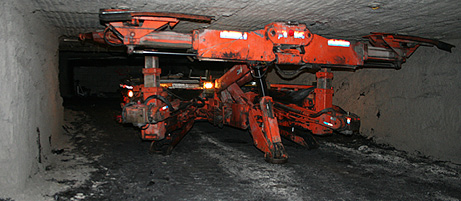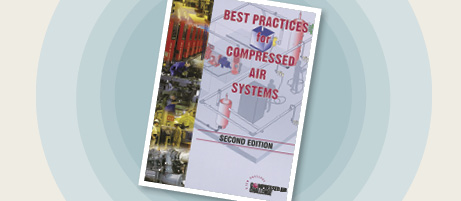Back to the Future at IFPE: Are We There Yet?
By Rance Herren, Founder, Fluid Power SME.
It is hard to believe that it is time for the 2023 edition of the International Fluid Power Exposition. As one of the world’s leading trade shows and technical conferences for fluid power, motion control, and power transmission technologies, IFPE is set to resume in all its glory this March in Las Vegas. Partnered with the CONEXPO-CON/AGG show, IFPE is where fluid power professionals from around the globe gather to see new products, discover the latest in technology and trends, network with other industry peers, and participate in an abundance of educational opportunities. It is a remarkable event and one that should not be missed.
The common theme at a show like IFPE is the unveiling of new innovations and technologies geared toward the needs of industry. It is a good thing, but as the next shiny object (or idea) is tossed about, we collectively must ask ourselves, how is this relevant? How is this meaningful? How do we make practical use of these technology advancements to design and build more productive and reliable machines?
Big buzzwords in recent years, and now more than ever, are efficiency and sustainability. They’re all the rage and what the cool kids are talking about. They are also driving serious conversations with very large budgets. But what is efficiency, and what does it look like? Is it the efficient use of energy? The conservation of natural resources? Developing renewable sources of energy? Streamlining of methods and processes? Increasing machine productivity, reliability and uptime? Knowledge and transfer of knowledge? The answer for most of us is a combination of all the above. But what does that mean for fluid power?
Not to go all nerdy here, but the starting point for any serious discussion on efficiency is with at least an appreciation of the first law of thermodynamics (conservation of energy); that states energy can neither be created nor destroyed – only converted from one form to another. And in the real world, energy from the point of origin may go through several conversions before getting to the point of use; and each conversion results in at least some loss of efficiency, most typically in the form of heat. This includes mechanical, electric, and fluid power. It’s nonnegotiable; it’s physics. Now that we know we never get the same energy out that is put in (let alone more), we can start to ask ourselves some questions about what efficiency really means.
Knowing the needs of our systems
A big source of inefficiency is overdesign because we do not know what we really want. We fail to fully define and document the system needs and parameters at the design phase, and when future proofing, it is often by overdesign. And any system that is operating below its designed capacity is by definition inefficient. Here is another ugly truth: often performance, energy efficiency, and cost effectiveness are at odds with each other. This must be recognized where it exists, and there must be a willingness to consider what we are willing to exchange in one for the other. Do we really know what the expected performance is under all conditions? Is the entire machine being overdesigned for the want of performance for a single function that could be approached differently?
Electrification
The push for electrification is massive. Whether for passenger vehicles, commercial trucks, light and heavy construction equipment, or agricultural machinery, to name a few, there is no denying that this is the future many are working toward, including many of the decision-makers in the fluid power world. The marriage of electricity and fluid power is nothing new. Electric motors as prime movers have been driving pumps and compressors as long as there have been, well, pumps and compressors. So have internal combustion engines, and that is where (at the moment), electrification seeks to displace its rival. Having spent 25 years in oil and gas, this is a bit of a gut punch to me, but such is the cost of progress. So perhaps the biggest question to be asked and answered is how can society support these lofty goals?
Here is yet another ugly truth. Batteries need to be charged, and at this particular time, the electrical grid is not up to the projected challenge. Billions if not trillions of dollars will be needed in the U.S. alone to develop the infrastructure, and that budgeting will come from increased tax revenue and rates. (Recall that other ugly truth, that often performance, energy efficiency, and cost effectiveness are at odds with each other.) Proof of that was in full view within a matter of days of California announcing the future banning of new gas-powered vehicles. State-regulated utilities asked residents to curb evening energy consumption and refrain from charging electric vehicles. This is not an isolated incident domestically or globally, nor is it the only time extreme weather has affected EV drivers. It is well documented. Another concern is the availability of lithium, an essential element in rechargeable batteries.
The demand for lithium has increased at least 30 times between 2000 and 2015 and is expected to increase by another 1,000% by 2025 as compared to 2015. As of 2021, Australia accounts for 52% of global lithium production and was the number one lithium producing country in the world. Chile ranked second with its 24.5%, followed by China at 13.2%. Overall, Australia, Chile, and China have nearly 90% of lithium production in the world. The U.S. shares sixth spot with Portugal, having only 0.8% global share. The only existing lithium producer in the U.S. is in Nevada, and according to the U.S. Geological Survey, the country holds only an estimated 3.6% of global lithium reserves. China has the largest known lithium deposits in the world and will dominate the future lithium supply. Going forward, obtaining lithium may not be as easy given geopolitical concerns between China and the West. An inability to produce enough lithium would result in severe delays and disruptions to the roll out, implementation, and sustainability of electrification. Kind of rings of that whole dependence-on-foreign-oil-situation, doesn’t it? This is not to mention the environmental impact of lithium mining for batteries, the oppressively high cost to replace a battery, or the enormous cost and environmental impact of disposal. There are plenty of articles available to satisfy that curiosity should one care to know more.
So what does that have to do with fluid power systems used on industrial machinery and mobile equipment? More than one might think. From an electric grid perspective, battery-powered heavy construction, mining, and even agricultural equipment will be sharing and working in the same space as electric vehicles. That is unless diesel power generators are at hand. Yes, Rome was not built in a day, but many entities are moving full-speed ahead with their agendas, but with seemingly little attention being paid to the immediate and long-term impacts.
Among the many lessons from the COVID-19 pandemic we should have learned is how vulnerable our manufacturing base is to disruption. Another lesson is that supply chain is more than just manufactured products; it is about workers. Skilled workers. The fact is we are in a crisis. Let me say that again. We are in a crisis! Much like the hard sciences, the skilled trades are suffering an alarming drain on the talent pool. The number of individuals coming into and staying in the trades compared with those leaving or retiring is strikingly disproportionate. It has even become a matter of national security. In a September 2022 article in Foreign Affairs magazine, the authors argued, “Washington must acknowledge that education is no longer just a domestic policy issue but a national security issue on which the very future of the United States depends.” What this means is that as a country and a society, we need to put as much passion into educating those who will manufacture and maintain the equipment of the future as we do in developing and deploying the technology itself.
What now?
For the past several years, we’ve seen a regimented march to a steady drumbeat to abandon fluid power as a primary source of power transmission in many applications, and many are happy to see it relegated to a place where no other technology will suffice, regardless of efficiency, ease of application, and flexibility of installation. Many in our own industry are willing to cede the fight if they can cling to the power density argument. Unless the plan is to negotiate a peaceful surrender, it is time to ask ourselves some serious questions.
How well have we used the technologies and tools that we have available to us in the here and now? How many responsible for evaluating the various available technologies or designing fluid power systems are even aware of ISO/TR 22164, Application Notes for the Optimization of Energy Efficiency in Hydraulic Systems, or, for the pneumatically minded, ISO/TR 22165, Application Notes for the Improvement of the Energy Efficiency of Pneumatic Systems? These documents provide advice on how to design hydraulic and pneumatic systems with increased energy efficiency while maintaining the intended functionality of the machine. They are checklists of sorts to prompt the user of the many considerations for defining machine architecture, functionality, and duty cycle as well as component specification and selection, the use of software for system validation and optimization. This document does not tell one how to design a hydraulic or pneumatic system; rather it provides broad reminders of the technologies, tools, and best practices that are available to us right now.
Are we clinging to outdated technologies and rules of thumb from the past? Fluid power manufacturers are developing more energy efficient pumps, motor controls, and accessories. From energy efficient hydraulic fluids to variable frequency pump drives and electronics to manage power demands. How well are we embracing and adopting these technologies? Are reservoirs being grossly oversized based on antiquated rules of thumb or components being incorrect specified based on nominal flow rates? Are we really serious about STEM and skilled trades education for all trades, or just those that fit in the environmental box? Is skill-specific training and certification something worth investing in, or just another nuisance expense?
I will admit, I am not as hip and trendy as I would like to think I am. Somewhere I heard the phrase FOLO. Not knowing what it meant, I googled it. FOLO is an acronym for fear of losing out. It also turns out that FOLO has infested the business world too. Many leaders invest and prioritize their model based on hype, trends, and perceptions of what others are doing, rather than their own business strategy. They see a competitor going down a path, and they think they must do so too, often based on erroneous, incomplete, or biased data. They might not even fully understand or agree with what they are embarking on; nevertheless, they participate because everyone is doing it. There is also a lot of external pressure from nonfinancial factors, such as ESG – environmental, social, and governance – activism as part of their analysis and decision-making process. This is occurring posthaste, with equal intensity in consumer, commercial, and industrial markets.
None of this is to say that innovation, including electrification, is not important. But it would be ridiculous and disingenuous to claim we have made best use of all available fluid power technologies and best practices, and that, as a society, we have sufficiently invested in the infrastructure to support it. Please do not get me wrong: I do not hate electrification or any other form of alternative energy. It has many benefits that will ultimately outweigh the drawbacks, and fluid power must fight and earn the right to keep its place. But until we get where we want to go with electrification, maybe we pump the brakes a little, lest we go into an uncontrollable skid from which the industry may not recover.
We should all want to be good stewards of the planet we live on. But as noble as it may sound, at this juncture zero emissions means nothing more than transferring the source of pollution from one form of energy to another. And in many instances, we may be worse off than where we started.
Are we there yet? No. But we will be eventually. Maybe.







